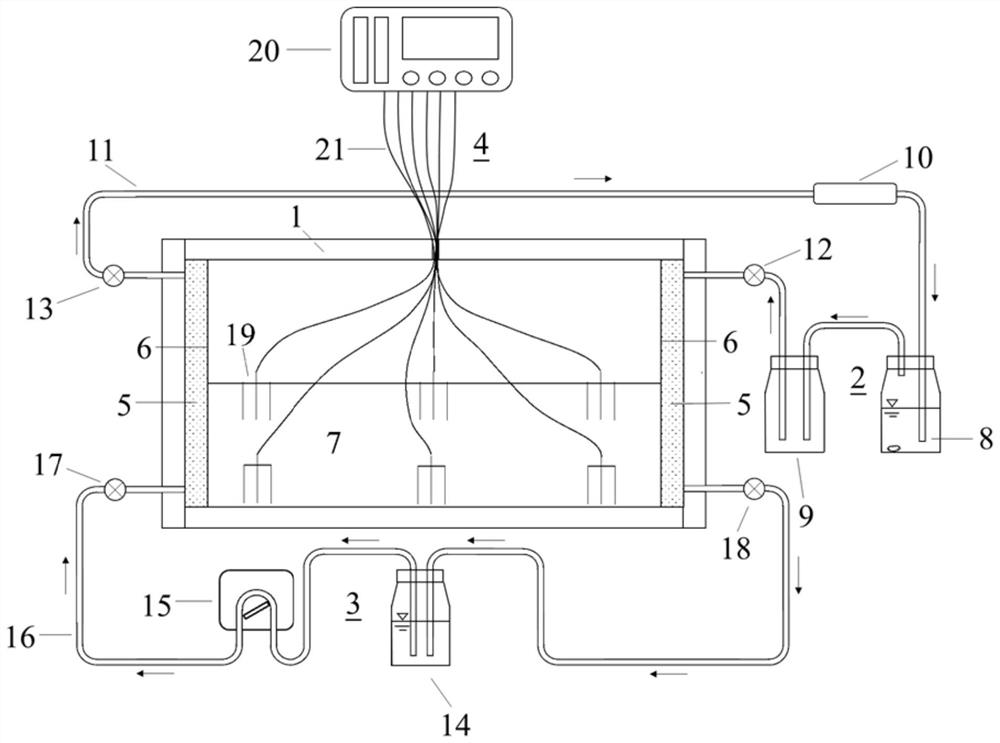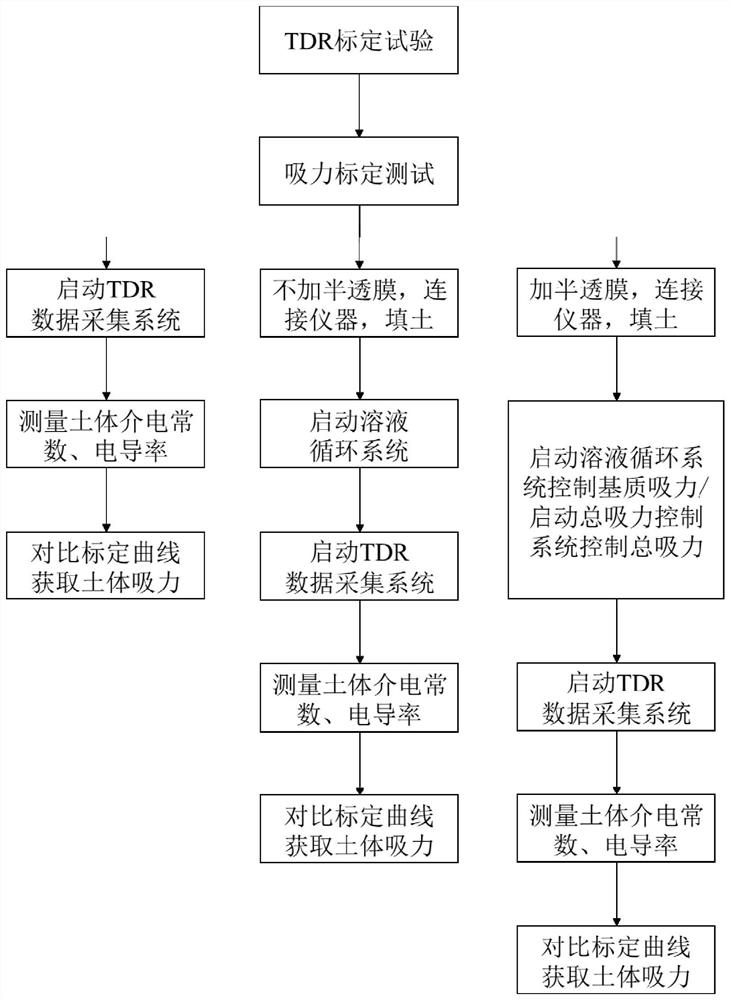Method and device for monitoring osmotic suction in heavy metal polluted sites by time domain reflectometry
A technology of time domain reflection and heavy metals, applied in the direction of measuring devices, instruments, surface/boundary effects, etc., can solve the problems of complicated steps, low degree of automation, time-consuming and labor-consuming, etc., and achieve convenient operation, small disturbance, and fast measurement data precise effect
- Summary
- Abstract
- Description
- Claims
- Application Information
AI Technical Summary
Problems solved by technology
Method used
Image
Examples
Embodiment 1
[0039] Embodiment 1 of the present invention provides a model test to simulate the horizontal migration of Cu ions in the heavy metal Cu ion-contaminated site, aiming at long-term observation of the osmotic suction of the soil in the polluted site. For the test device, please refer to figure 1 , please refer to the operation process figure 2 . The specific operation steps are as follows:
[0040] Step 1, carry out the calibration test of soil volume moisture content-dielectric constant: dry the undisturbed soil, grind, and sieve; control the volume moisture content n% in the range of 10-40% and equal gradient, the gradient is 5%; Prepare a container with a certain volume V, according to the dry density ρ of the undisturbed soil d , container volume V, volume moisture content n%, calculate the mass m of dry soil to be filled s = ρ d V, the volume of water n% V, the total mass of soil and water ρ d V+n%V, choose the mass of dry soil M when mixing soil s >m s , the volume...
Embodiment 2
[0046] Embodiment 2 of the present invention provides a kind of model test of controlling suction, simulates the Cu ion polluted soil with different matrix suction or total suction value, aims to measure the osmotic suction of polluted soil with different suction values, test device please refer to figure 1 , please refer to the operation process figure 2 . The specific operation steps are as follows:
[0047] Steps 1 to 4 are the same as in Example 1.
[0048] Step five, press figure 1 The connection test instrument shown in the figure uses a semi-permeable membrane 6 and is filled with Cu ion-contaminated soil, and the dry density of the filled soil is similar to that of the undisturbed soil.
[0049] Step 6, close the inlet valve and the outlet valve, start the solution circulation system 3, and make the CuCl 2 The solution and the Cu ion-contaminated soil produce water migration until CuCl 2 Suction balance between solution and polluted soil, in order to obtain Cu io...
Embodiment 3
[0052] Embodiment 3 of the present invention provides a time-domain reflectometry device for monitoring osmotic suction in heavy metal-contaminated sites, including a plexiglass chamber 1 , a total suction control system 2 , a solution circulation system 3 , and a TDR data acquisition system 4 . Wherein, both ends of the plexiglass chamber 1 are provided with permeable stones 5, and the inner side of the permeable stone 5 at each end is provided with a detachable semi-permeable membrane 6, and the soil body 7 to be tested is filled in the plexiglass chamber 1, and the semi-permeable membrane 6 is located between the permeable stone 5 and the soil body 7 to be tested. The permeable stone 5 can block soil particles through liquid, and the semi-permeable membrane 6 can block solute molecules through water molecules. In embodiment 1, the semi-permeable membrane 6 is disassembled, so that the heavy metal ions can penetrate into the soil 7 to be tested when the heavy metal solution ...
PUM
 Login to View More
Login to View More Abstract
Description
Claims
Application Information
 Login to View More
Login to View More - R&D
- Intellectual Property
- Life Sciences
- Materials
- Tech Scout
- Unparalleled Data Quality
- Higher Quality Content
- 60% Fewer Hallucinations
Browse by: Latest US Patents, China's latest patents, Technical Efficacy Thesaurus, Application Domain, Technology Topic, Popular Technical Reports.
© 2025 PatSnap. All rights reserved.Legal|Privacy policy|Modern Slavery Act Transparency Statement|Sitemap|About US| Contact US: help@patsnap.com


